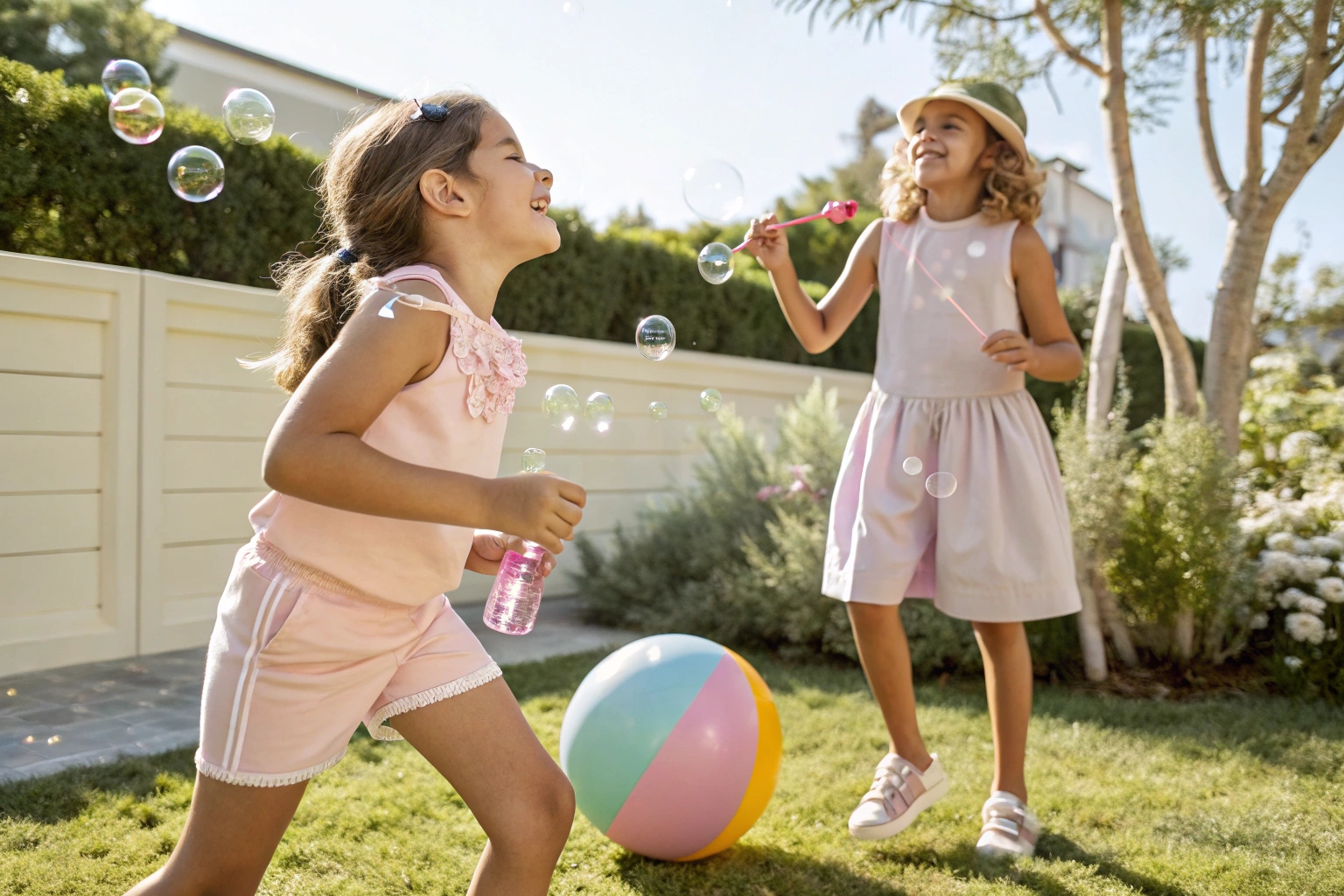If your kid’s closet is overflowing with barely-worn clothes, you’re not alone—and it’s costing both money and the planet.
Kidswear capsule wardrobes reduce clothing waste by promoting intentional purchases, outfit flexibility, and longer wear cycles—all while keeping kids comfortable and stylish.
Fast-growing kids don’t need fast fashion. They need a smart wardrobe system that adapts as they grow—and capsule wardrobes are the answer.
Benefits of Capsule Wardrobes for Growing Kids
Too many clothes lead to decision fatigue, clutter, and waste—especially when kids grow fast.
Capsule wardrobes for kids reduce waste by limiting unnecessary purchases, streamlining outfits, and promoting reusability, making them ideal for sustainability-minded families.
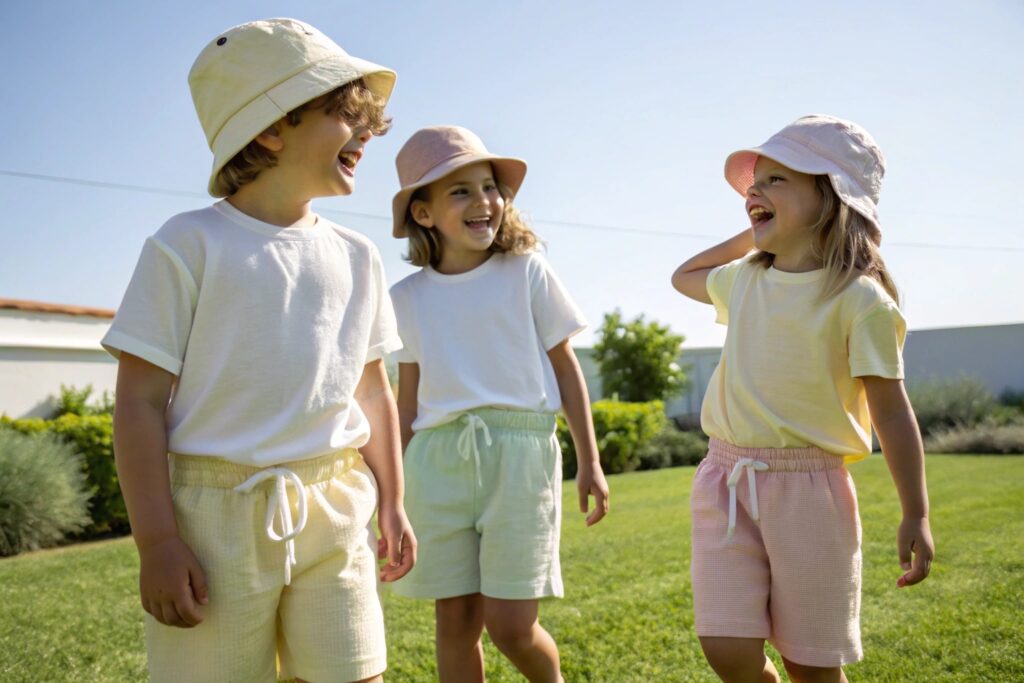
How do capsule wardrobes simplify daily dressing routines while reducing overconsumption?
Parents often buy more than needed just to “be safe.” But most kids end up wearing the same few pieces anyway. A capsule wardrobe flips this habit. It limits the number of items but increases the ways they can be worn.
For example, 6 tops, 4 bottoms, 2 jackets, and a few accessories can create over 50 outfit combinations. This reduces both morning chaos and laundry load. At Fumao Clothing, we help our partners develop capsule sets that blend color-coordinated pieces with versatile fits for different age groups.
Why do capsule wardrobes lead to more intentional shopping and less textile waste?
When parents build a capsule, they buy with purpose—not impulse. Instead of grabbing cheap seasonal items that wear out fast, they invest in quality, multi-use clothing.
This leads to longer-lasting garments and fewer textile discards. One of our European clients reported that their capsule customers returned less and repurchased more, due to the focused collection.
We design our kidswear with adjustable waistbands, flexible shoulder seams, and durable stitching—ideal for capsule collections that last beyond one growth spurt.
How to Build a Sustainable Kidswear Capsule
The secret isn’t more clothes—it’s the right clothes.
To build a sustainable kidswear capsule, choose durable materials, mix-and-match colors, and size-adjustable designs that adapt to your child’s growth.
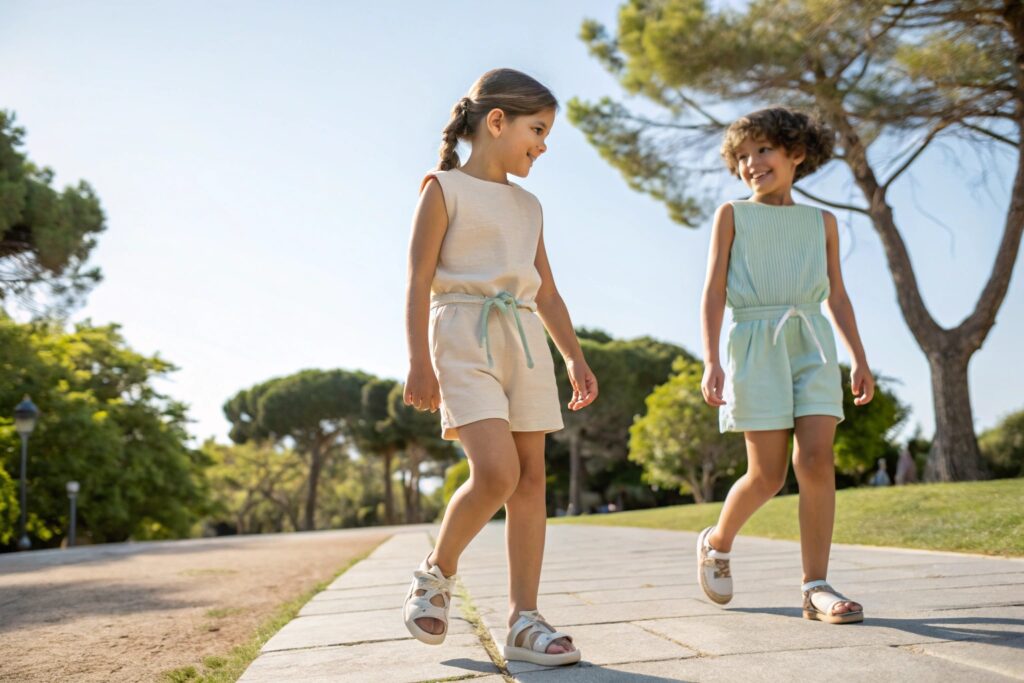
What are the core pieces every kidswear capsule should include to cover all seasons and activities?
A proper kidswear capsule isn’t about cutting corners—it’s about curating essentials. Here’s a basic framework:
| Category | Quantity | Notes |
|---|---|---|
| Tops | 5–6 | Solid colors, patterns that mix well |
| Bottoms | 3–4 | Leggings, jeans, joggers |
| Outerwear | 2–3 | One light jacket, one rainproof layer |
| Dresses (optional) | 2 | Layerable and season-neutral |
| Footwear | 2–3 | Everyday shoes, sport shoes, boots/sandals |
| Accessories | 2–3 | Beanies, scarves, multi-use belts |
We support our B2B partners by customizing capsule-ready bundles with consistent palettes—like neutral earthy tones or vibrant primary colors—making cross-pairing effortless.
How can fabric selection and adjustability help clothes grow with the child?
Growth happens fast, but the right garment can grow with the child. At Fumao Clothing, we often add:
- Elasticated waistbands with button adjusters
- Extended sleeve cuffs that roll down over time
- Reinforced knee patches for crawling phases
- Pre-washed cottons that resist shrinkage
Fabrics like Tencel, modal-cotton blends, and soft organic jerseys offer stretch and resilience without irritating young skin. Capsule collections built with these materials can easily survive being handed down to siblings—or resold.
Capsule wardrobes should adapt—not expire.
Top Kidswear Brands Offering Eco Capsules
Eco-capsules are no longer niche—they’re leading the future of kidswear.
Several leading kidswear brands now offer eco-friendly capsule wardrobes focused on organic fabrics, minimal waste, and long-term wearability.
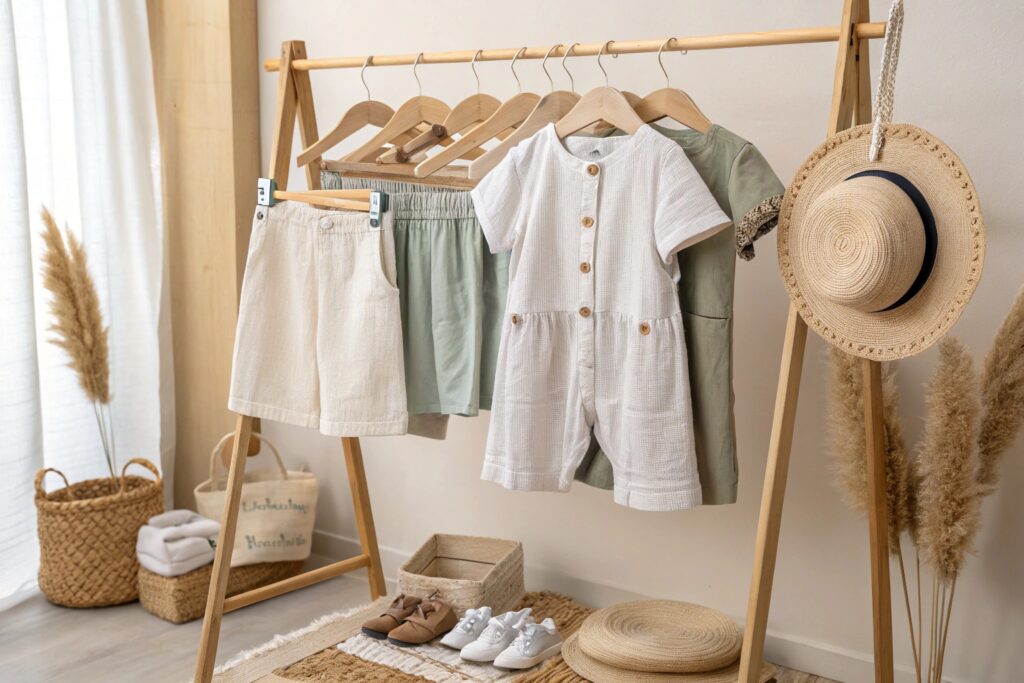
Which brands are setting the standard for sustainable, capsule-based kidswear collections?
We’ve watched the growth of capsule programs with great interest. Here are a few standouts:
| Brand Name | Country | Key Capsule Features |
|---|---|---|
| Petit Pli | UK | Expandable kidswear designed to grow with the child |
| Hanna Andersson | USA | Organic cotton basics with mixable color stories |
| Frugi | UK | Bright, playful, ethically-sourced wardrobe pieces |
| H&M Conscious Kids | Global | Affordable capsule-style bundles with recycled fibers |
| Colored Organics | USA | Soft palettes, heirloom durability, GOTS-certified |
Some of our partners use these examples as benchmarks. We supply capsule-ready custom collections with GRS-certified cotton and heat-resistant dyes, perfect for brands moving toward circular economy models.
What can rental-focused kidswear platforms learn from these capsule collections?
Rental kidswear is gaining traction. But unlike adult rentals, kids’ garments need quicker turnover, flexible sizing, and easier laundering. Capsule thinking helps by reducing SKU chaos and aligning inventory to proven combinations.
We helped a startup build capsule kits for 3 age bands: baby (0–12m), toddler (1–3y), and preschool (4–6y). Each kit had 10 items max—but covered play, nap, and outings. Their return rate dropped 40%, and reviews praised “how easy it was to dress my child every day.”
Capsules are scalable, predictable, and waste-conscious—a rental operator’s dream.
Tips to Minimize Waste from Outgrown Clothes
Most kid clothes get outgrown—not worn out. That’s a design and planning problem.
Minimizing waste from outgrown kidswear means planning for hand-me-downs, resale, donation, and building garments with longer fit windows.
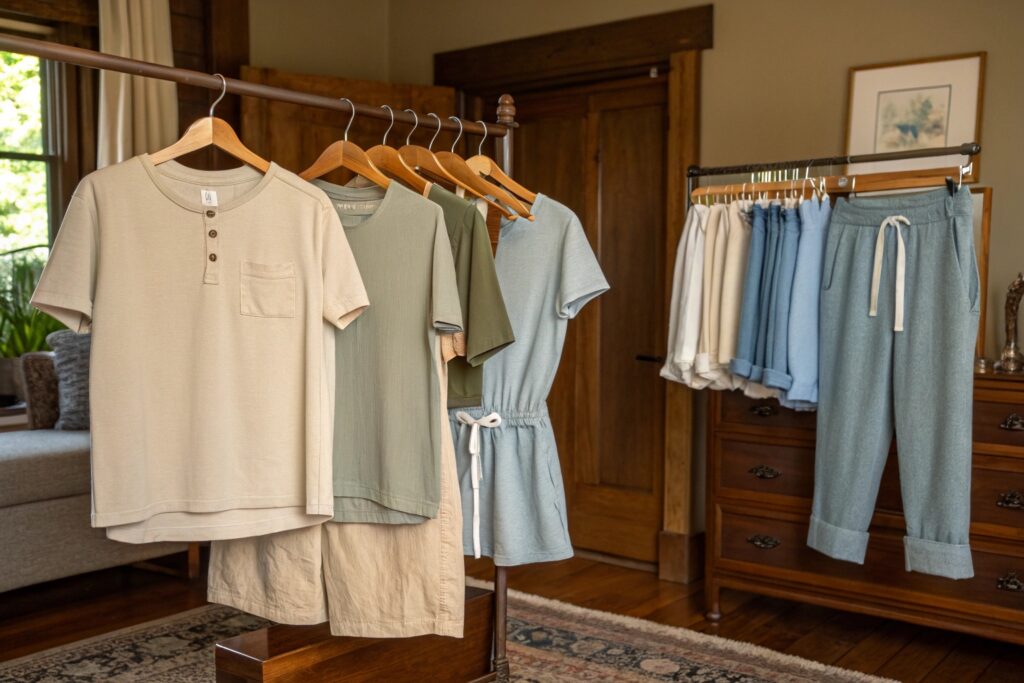
What design strategies help extend the usable life of a garment beyond one child?
Garments made for one season often fail after one growth spurt. But with a few smart changes, they can serve multiple lives.
Here’s what we build into capsule pieces:
- Size-flexible stitching: Allows seam extensions
- Gender-neutral palettes: Increases pass-down potential
- High-quality zippers and buttons: Reduces breakage
- Machine-washable finishes: Ensures low-maintenance handling
Clients who use our extended-fit design protocol typically see resale values rise. One U.S. boutique told us their Fumao-supplied capsule sets resell at 65% of original price—a win for both consumer and environment.
How can parents responsibly manage kidswear waste when items are no longer needed?
It starts with intent. Teach consumers to plan for handoff—not disposal. Brands can help by offering:
- Return incentives or resale platforms
- Donation kits with prepaid labels
- Loyalty points for recycling
One brand we collaborate with includes a “Pass It On” tag with each item, reminding parents this isn’t the end of the garment’s life.
Rental brands can go further—by refurbishing items in-house and rotating them back into capsule sets for the next age tier.
At Fumao Clothing, we’ve designed product flows that support reuse across 3–5 user cycles. That’s not just good sustainability—it’s smart supply chain thinking.
Conclusion
Kidswear capsules are more than minimalist fashion—they’re a powerful tool to cut waste, extend garment life, and build smarter, greener wardrobes for growing children.

